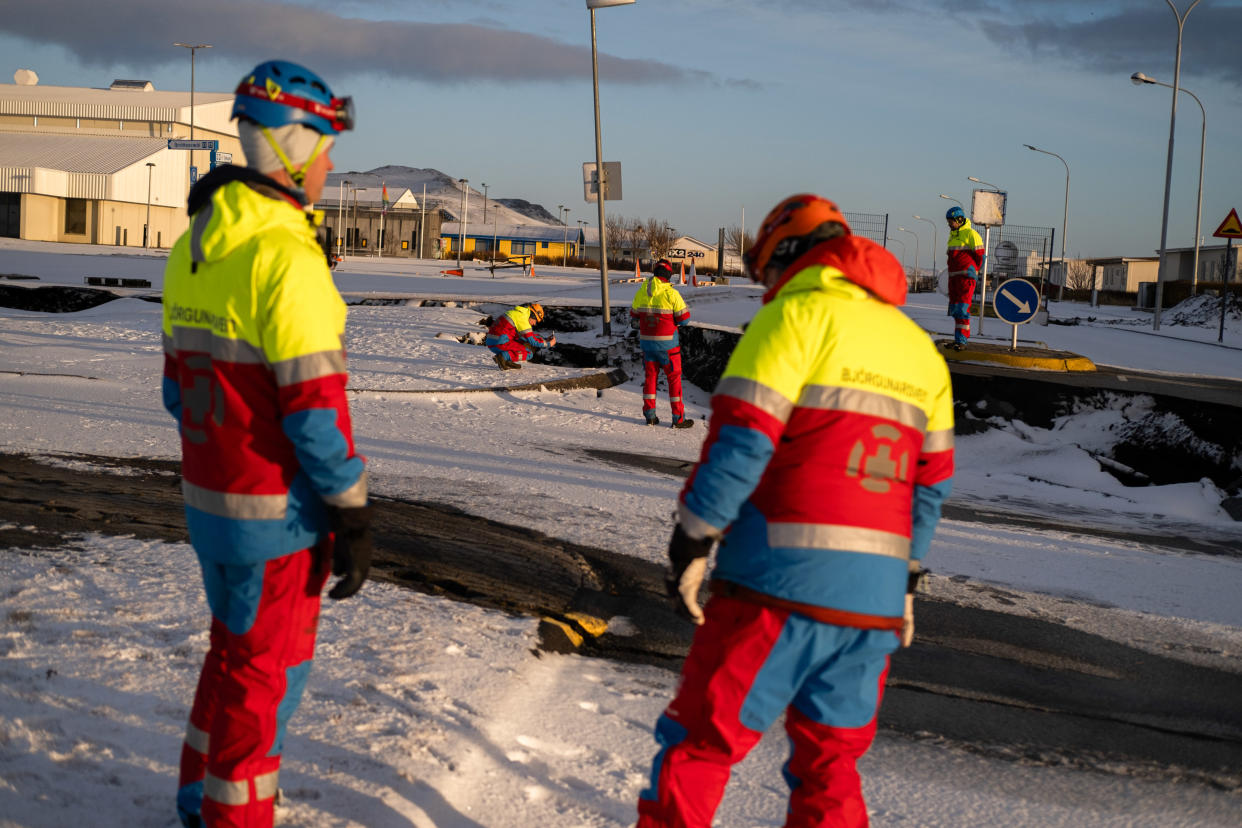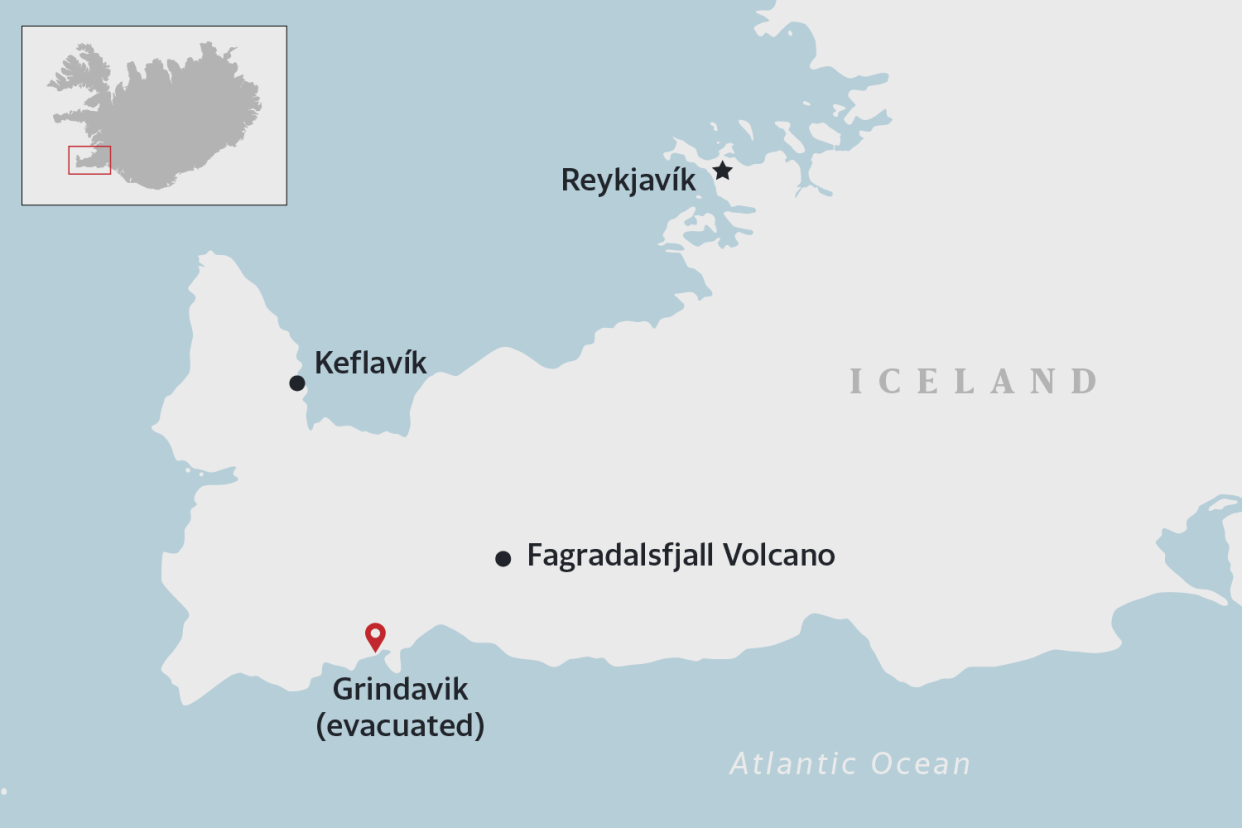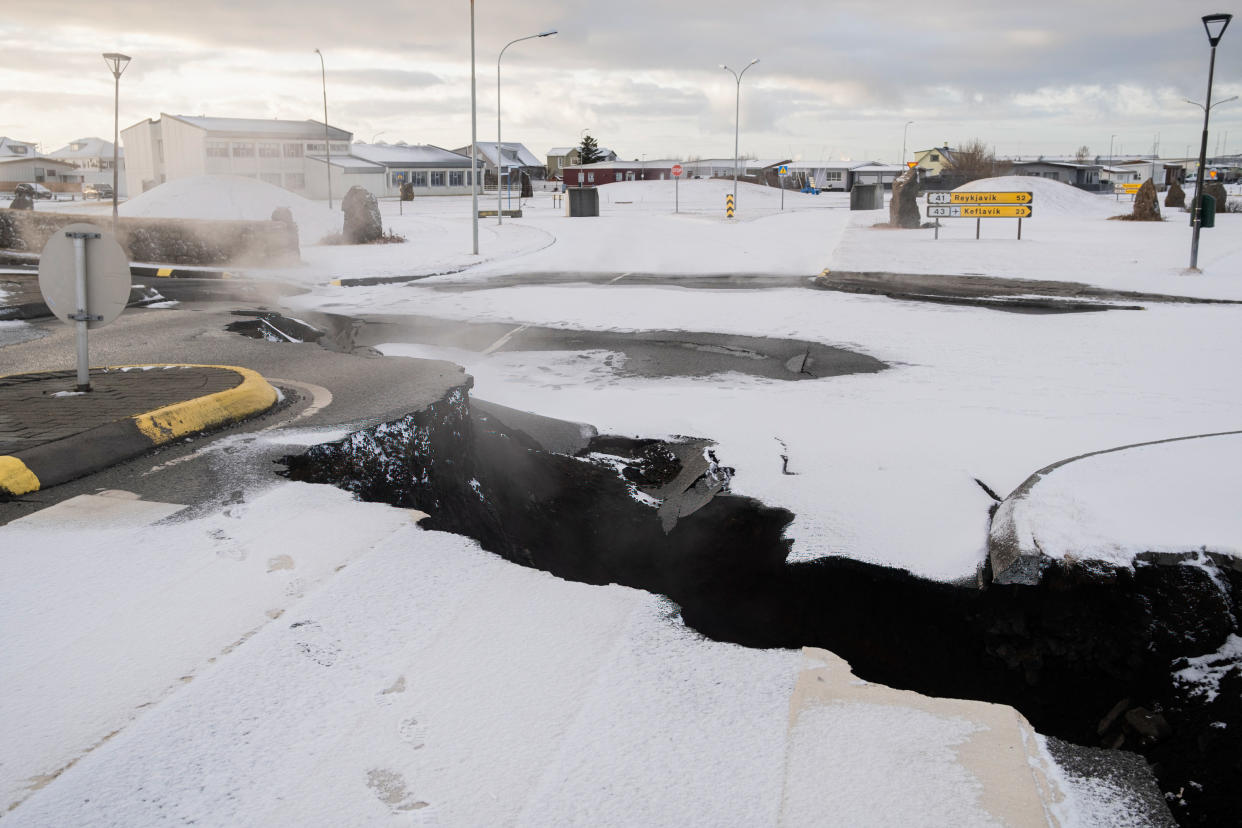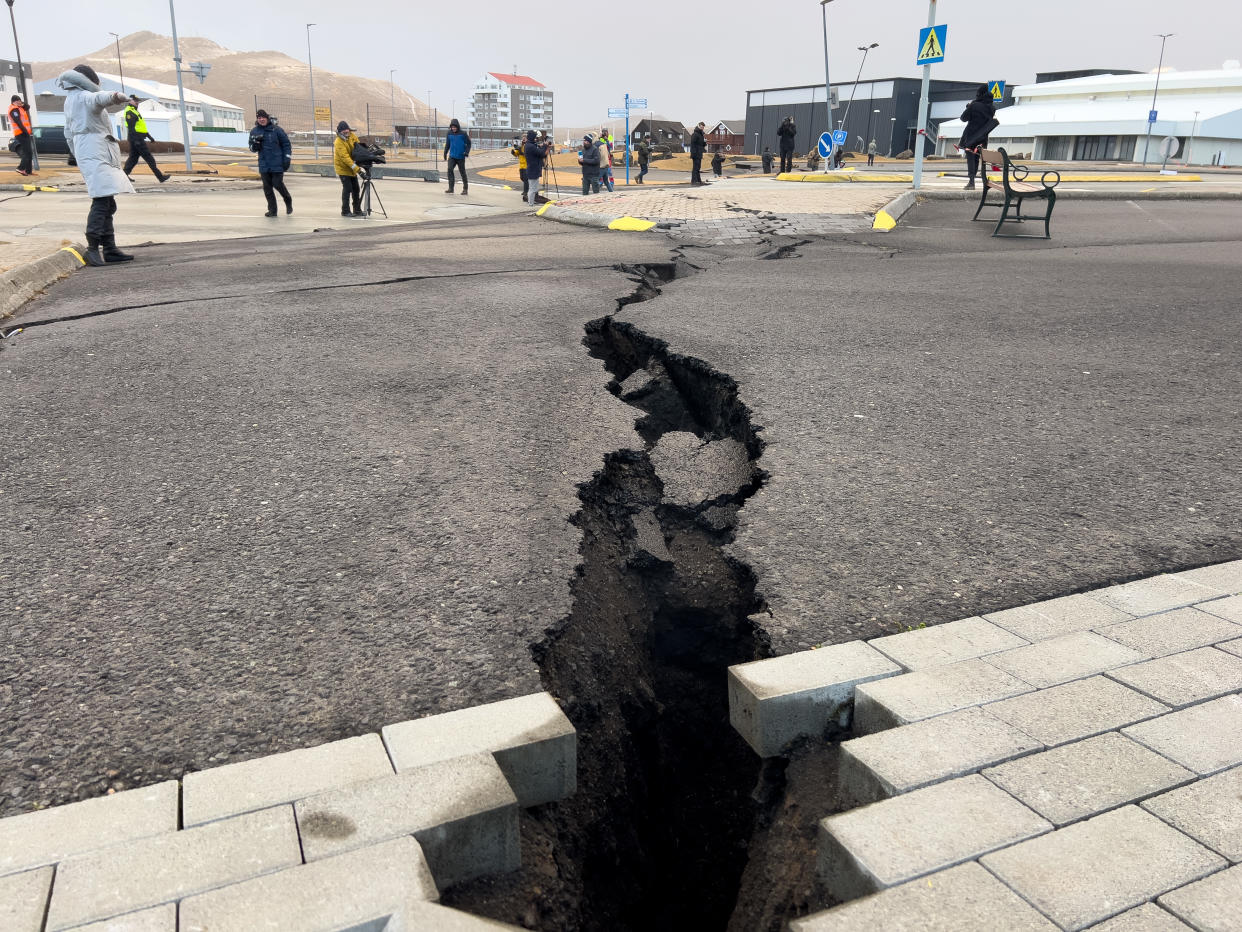Iceland volcano update: Earthquake 'swarm' strikes Grindavik area as residents still evacuated

It’s been more than two weeks since residents from an Icelandic fishing village were evacuated from their homes over extreme seismic activity. Since Nov. 10, tens of thousands of earthquakes and tremors have hit the Reykjanes Peninsula causing roads to split in half and houses to buckle. Iceland continues to wait for the looming eruption from the Fagradalsfjall volcano.
What’s the latest from Iceland’s Meteorological Office?
In the early hours of Monday morning, the Icelandic Meteorological Office detected the strongest earthquake to hit the affected area in the last 48 hours. Of the “swarm” of 300 earthquakes that were recorded between 7 p.m. ET and 6 a.m. ET, the most powerful had a magnitude of 3.0. At least 170 of the documented earthquakes occurred 3-5 kilometers below the surface. Since 6 a.m. ET, there have been an additional 200 earthquakes bringing the daily rate to 500 earthquakes per day.
Last Friday, the Department of Civil Protection and Emergency Management downgraded the public safety level from an emergency level to a dangerous level. The “Alert Phase” that is now implemented means that there is a heightened risk in the area and that restrictions, closures and evacuation procedures are likely to be put in place.
Assessments from the Meteorological Office stated that the possibility of a sudden eruption near Grindavik has been decreasing every day and is now considered small.

Although the town of Grindavik remains relatively safe, an eruption is still possible above the magma tunnel that lies between Sylingafell and Hagafell.
Recommended reading
The Independent: Every resident of an Icelandic town was evacuated due to a volcano. Daring rescuers went back to save the pets.
UPI:Iceland residents remain in holding pattern as volcano eruption threat decreases
Business Insider:I live next to an Icelandic volcano that’s about to blow. I wanted to be closure to nature, but not that close.
The more than 3,600 residents of Grindavik have been allowed to return to their homes for a number of hours to check on livestock and to collect personal belongings. However, until scientists can state that there is no danger, the locals will be unable to return home for good.
Due to the damage to the major infrastructure including the sewage system, it is most likely to be months before Grindavik residents can return home. Those who have been forced into temporary accommodation have been given financial support by the government to cover rent. Prime Minister Katrin Jakobsdottir said that Parliament is set to discuss housing support for the evacuees this week and a bill on financial assistance is expected to be passed.

“The last time that an evacuation of an entire sizable settlement took place was 50 years ago, in 1973, when a volcano unexpectedly erupted on the island of Heimaey off the south coast of Iceland,” Dave McGarvie, a volcanologist at Lancaster University in England, told Yahoo News.
What travel warnings have been issued?
Three major roads that connect Grindavik to other areas have been temporarily closed as a precautionary measure.
No flights have been affected as of Monday. However, Grindavik is located roughly 40 miles from Iceland’s capital, Reykjavik, and less than 20 miles from Keflavik International Airport.
A popular tourist attraction, the Blue Lagoon Geothermal Spa, will remain closed until Nov. 30.

The last major volcanic eruption
“The last time eruptions like this occurred in this area was circa 800 years ago, when the area was sparsely populated,” McGarvie said.
The Reykjanes Peninsula has experienced a relatively small eruption every year for the last three years, and all three occurred far from residential areas. The last volcano in Iceland to cause trouble internationally was Eyjafjallajökull, which erupted in 2010. A huge ash cloud that blew five miles into the sky grounded flights across Europe, forcing a shutdown of its airspace.
